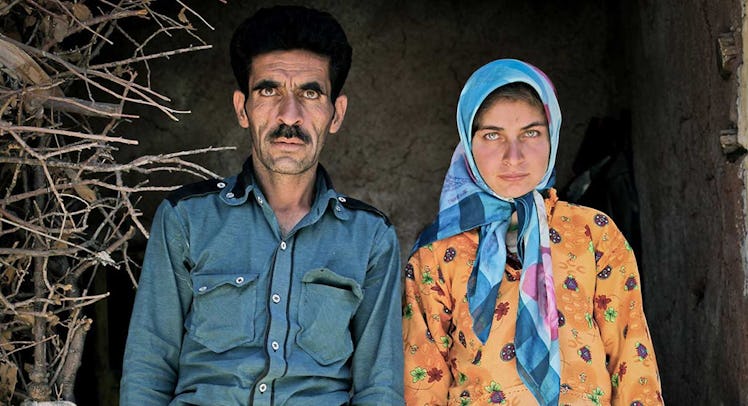What I Learned Shooting Portraits of Iran’s Proud Fathers of Daughters
"I was used to people having weird ideas about Iran. I know that people outside of Iran have some ideas of Iran that are very far from reality."

Over the past few weeks, protests have rocked Iran, with 3700 Iranians arrested and at least 21 killed. There are widespread complaints about the country internationally. The economy is struggling. The Supreme Leader has been in power for almost 30 years and blames international powers for the country’s woes. Meanwhile, most Iranians say that they are taking to the streets because they want their economic conditions to change, after decades of an unequal status quo. And all the while, the people of Iran are portrayed as though they are synonymous with their government.
Nafise Motlaq, who was born and raised in the country and now lives in Turkey, set out to change that, but mostly by accident. It was only after having left Iran and living in Malaysia for nearly a decade that she realized that something, anything, had to change about how people viewed the country. She started taking photos of Iranian fathers and their daughters. She found that relationships between fathers and daughters are mostly beautiful, mostly loving, sometimes distant, sometimes contentious. Just like they are all over the world.
Here, in her own words, she talks about how she began the project and who was surprised the most by her work.
I waited to go back to Iran for more than seven years after I left. Then my father got sick. He fell in a coma and had a kidney problem. It was a very sad moment. I was away and they didn’t tell me the details. He miraculously survived so I decided it was time to visit.
I knew I wanted to show my friends and students back in Malaysia, where I was living, my family. So I took many photographs of me and my father. I had relatives that were visiting my father so I also took pictures of them, specifically, of the fathers and the daughters. And I thought to myself, This is going to be an interesting project. I myself have a very diverse family: some are very religious, some are very modern; some live in rural areas, some live in very luxury houses. So that was a good start.
I was used to people having weird ideas about Iran. I know that people outside of Iran have some ideas of Iran that are very far from reality. The reality of Iran is not as dark as people think although there are some real problems. I thought maybe some portraits of Iranian people might help so I started drawing a table of all of the classes of society: religious traditional, religious modern, modern rural, all modern, etc. I was committed to showing the diversity of relationships between fathers and daughters.
When I was abroad, I was always getting questions like, “Does your father know? Does your dad support that you study abroad?” And I was like, “What does that mean?” It annoyed me. Of course my father knew. We have a relationship. It seemed that people have stereotyped images of men in Iran whether they fathers or husbands, that they were closed-minded men!
Nafise Motlaq
It was fascinating to get a glimpse into the relationships other Iranian daughters had with their fathers. But it’s not as though Iran is somehow exceptional. I have visited 20 countries and lived in two or three. In my opinion, there is not much different between Iranian families and other families. I’ve received so many emails from Latin Americans and Europeans. People there see themselves in my photographs. All the fears we have of cultures and countries that we don’t know much about that we have, is because of lack of knowledge. We don’t know about something and we get afraid of it. This kind of project makes people more close to each other. It’s about common sense and life.
What was really surprising for me after publishing this project was the feedback. Even in the online comments were indicative. “It cannot be in Iran,” some of them said. “Those girls with the American fashion and the boob jobs!” And some of the feedback was just absurd. “It’s impossible,” one person said. “A father in Iran would not allow the daughters be in front of the camera like that with a dog.” That was confusing. Iranians have dogs.
Nafise Motlaq
I think the project was even surprising for Iranians who live in Iran. Iran is a huge country of 80 million people. People are only used to dealing with their own communities — with people who look like them. In the national media we don’t have the opportunity to see images of other peoples; families and relatives or anything like that. I believe Iranians don’t know much about themselves either. So much of the feedback from Iranians was, “Oh my god, how diverse we are!” They didn’t know.
— As Told To Lizzy Francis
Fatherly prides itself on publishing true stories told by a diverse group of dads (and occasionally moms). Interested in being part of that group. Please email story ideas or manuscripts to our editors at submissions@fatherly.com. For more information, check out our FAQs. But there’s no need to overthink it. We’re genuinely excited to hear what you have to say.
This article was originally published on